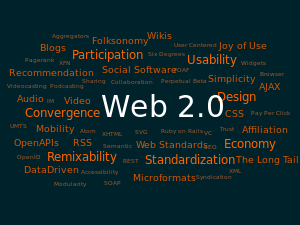How social networking is changing the way we interact with machines
Following on from Alex Williams’ excellent article in TechCrunch this blog envisions the future of machine-to-person interaction in what is becoming known as the frontier of Web 3.0.
“The machines will have a voice. They will communicate in increasingly human-like ways!”
Let’s start with a bit of background on the terminology:
Web 2.0
This is the term used to describe web entities where users interact and collaborate with each other via social media dialogue. This takes place in virtual communities where people can interact with each other through creating, viewing or commenting on content. Examples of Web 2.0 include social networking sites, blogs, wikis, video sharing sites, hosted services, web applications, mashups and folksonomies.
Web 3.0
Definitions of Web 3.0 vary greatly, but we like this one best. Conrad Wolfram says that Web 3.0 is where “the machine is the one doing the talking”. In Web 3.0, it’s not humans who are interacting, but machines. For machines, Web 3.0 is their chance to be heard!
So what is changing for machines?
One of the main factors driving the popularity of Web 2.0 is the widespread use of activity streams. Streams provide snapshots of information viewed on “walls” and provide a way of humans digesting information such as events and messages. This participatory information-sharing over the internet is revolutionizing human interaction both in work and social contexts. Users can choose to dip in or out of a topic with little friction and often in just a single click! Feeds can be tweaked to increase usefulness and relevance. This social innovation is empowering many who are seeking quick and simple ways to interact with their peers.
So if Web 2.0 is all about connecting people in new and innovative ways, what does that mean for Web 3.0? Our feeling is that we shouldn’t let humans have all the fun! Web 3.0 offers the opportunity to make machines talk and interact and is a natural progression from the changes seen in human social networking.
Social networking is leading the way in how people and (now) machines interact and manage complicated relationships. By being connected, machines can be told (by other machines) if they have a problem and need some attention. We can see a time when one machine will fix another (scheduling a reboot or ordering spare parts direct from the vendor)!
Machine-to-machine interaction opens up a wide range of possibilities. Human social networking has shown that when technology is working it really works. One has only to consider the impact of Facebook to imagine what the future might be like for machines. With so much information floating around out there, the imperative to create simple-to-use, effort-saving tools offers a great opportunity for businesses in this space. At Genkiosk we are seeking to do just that, our search for the “Facebook for Machines” is underway..
